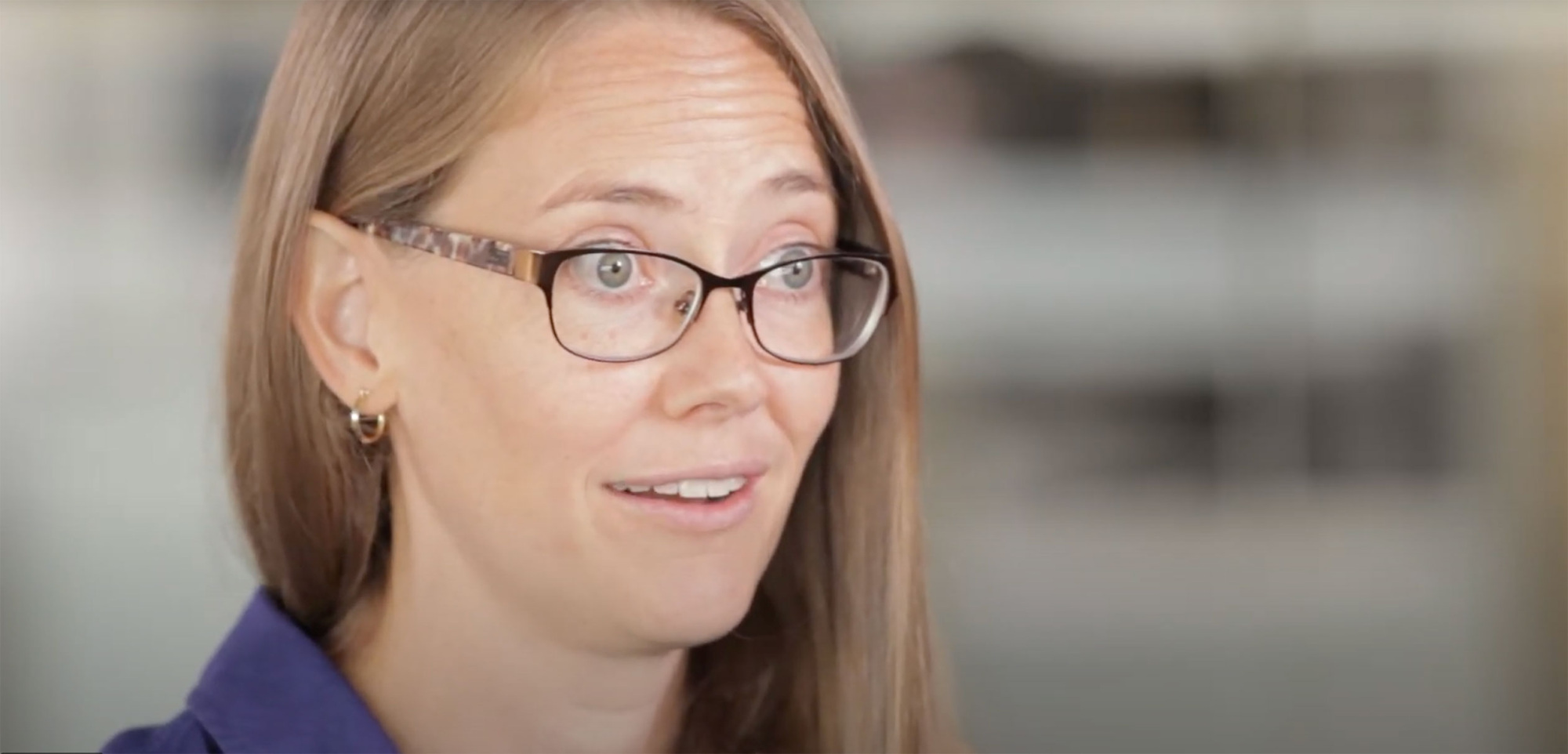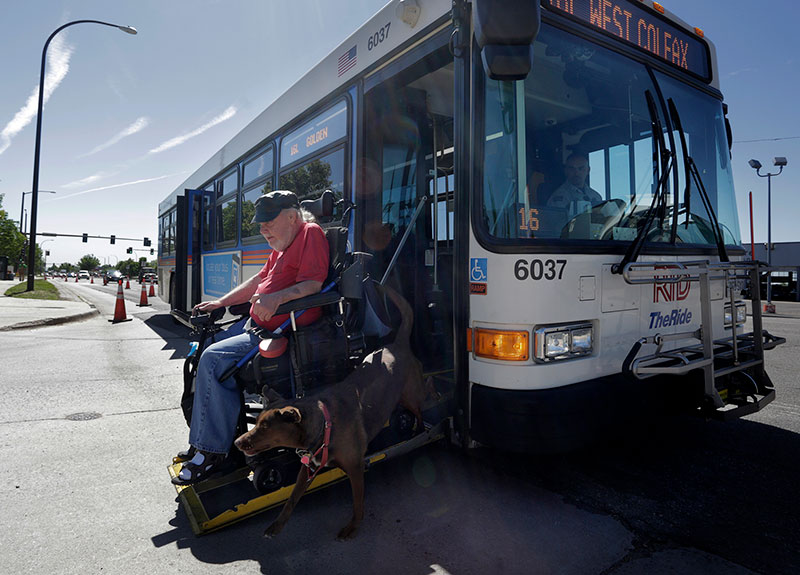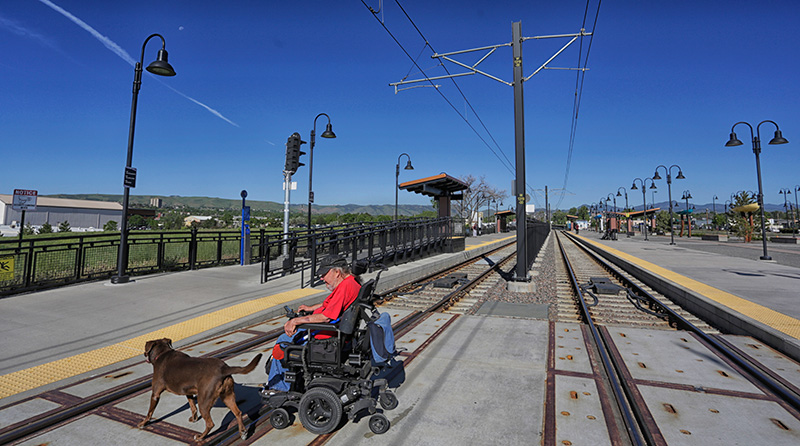
Carolyn McAndrews, PhD, professor of urban planning at the University of Colorado Denver
Carolyn McAndrews, PhD, professor of urban planning at the University of Colorado Denver
Jill Locantore hasn’t owned a car since 1997, when she moved from Denver to Toronto for graduate school. The Canadian city’s strong public transit system and its compact neighborhoods made it easy to find everything she needed within walking distance of her house.
Locantore found the carless lifestyle so appealing that she changed her profession to urban planning from psychology. And 20 years later, now back in Denver and living near City Park, she finds that biking and walking around the city put her in a good mood, and she’s happy to avoid car payments and other hassles.
“It seems like driving makes people very upset,” says Locantore, who promotes policies to make her city friendlier to pedestrians as associate director of WalkDenver. “I’m so grateful I don’t have to deal with all of that headache.”
On the other side of the state, in the Western Slope town of Fruita, Kelly Parker has had a very different experience of living without a car.
Physical disabilities have made it impossible to drive for the past few years, and she relies on her fiancé to get around. The lack of independence has worsened her depression, says Parker.
“I love my fiancé and everything,” she says. “But I don’t have the ability to do things on my own. Even going to the grocery store or going to the mall or going to an appointment—a doctor’s appointment—on my own. I don’t have that freedom anymore.”
Cars are killers, and not only because they contribute to the greenhouse gases that cause climate change. Each year, more than 30,000 Americans die in motor vehicle accidents, according to the Centers for Disease Control and Prevention (CDC); many of them are young. Traffic pollution is known to cause or worsen asthma and lung disease—especially in children living close to highways and major arterial roads—as well as cardiovascular disease and pre-term births. And research has repeatedly found a link between time spent in a car and obesity.
But cars are also king—all over the U.S. and especially in rural areas. After decades of state and federal policies that support roads and highways as the dominant mode of transportation, people who lack access to a car in Colorado can face isolation, lost income opportunities and other hardships that can take a toll on health.
“Cars are often central to the very viability of living in a smaller community or a low-density place,” says Carolyn McAndrews, PhD, a professor of urban planning at the University of Colorado Denver who focuses on the health, safety and environmental effects of transportation systems.
While the health costs associated with cars are well documented, she says, not being able to get around can be harmful, too. Everything from a person’s job opportunities, to where their children can go to school or what after-school activities they can participate in, to where they can live depends on their ability to get around. Not being able to travel freely can have deep impacts on people’s lives, their health and the health of their families.
“We travel all the time to carry out our daily activities,” says McAndrews. “And those daily activities are nested within our social lives.”
The health impacts of living without a car—or of gaining access to one—aren’t well understood, says Rolf Pendall, PhD, co-director of the Metropolitan Housing and Communities Policy Center at the Urban Institute in Washington, D.C.
“It’s been understudied because of a blind spot that funders, government and advocates have had,” says Pendall. “The mainstream view all the way up to the U.S. Department of Transportation is that anything about low-income people and how they travel is going to be about the buses or about the trains.”
But most Americans at every income level get around in cars, despite the costs. Fewer than one in four households of people living in poverty has no vehicle at all, according to census data. Even fewer go years without a car.
The research that has been done indicates that losing access to a car or a license can be devastating. Older adults who stop driving double their risk of depressive symptoms, according to studies examined in a meta-analysis published last year. The same analysis, funded by the AAA Foundation for Traffic Safety and the CDC, found increasing evidence that when older adults stop driving—often for medical reasons—it can contribute to sometimes rapid physical and social declines, and can even mean dying sooner.
“To me, it’s no surprise that giving up the driver’s license or losing access to a vehicle has such an important impact on—especially—mental health,” says the study’s co-author Guohua Li, MD, DrPH, who directs the Center for Injury Epidemiology and Prevention at Columbia University.
For younger adults, too, having a car can make a huge difference—including in where a person can live. In a well-known, long-term experiment called Moving to Opportunity, families in low-income households were given housing vouchers and other assistance that helped them move out of high-poverty neighborhoods.
Pendall co-authored a study that looked at this group to see how people with access to cars fared compared with those without. He and his colleagues found that people with cars found housing in neighborhoods with lower poverty, lower rates of crime, and lower cancer risk compared with families that had no car. (Cancer risk was defined by the area’s rating in an Environmental Protection Agency index, which takes into account exposure to dangerous air pollution.)
With that in mind, it may not be great news that there’s been a decline in driving among young people in recent decades. The change is sometimes attributed to millennials favoring alternate forms of transit. But research has shown that race and class often play bigger roles than individual preferences. A 2012 survey of young Americans found that 67 percent of non-Hispanic whites had their drivers’ licenses before they turned 18, compared with 37 percent of blacks and just 29 percent of Hispanics.
Getting a license can require signing up for a driver’s education class and spending supervised time behind the wheel—not to mention the costs associated with having access to a car.
“The costs add up quickly. For some families, that could be quite a barrier,” says Li.
People who don’t drive can find themselves stuck—even in Colorado’s metropolitan areas.

Joe Beaver and his service dog Hershey get off a bus in Lakewood. Photo by Joe Mahoney / special to The Colorado Trust
Joe Beaver lives in Lakewood. He’s 74 and uses a wheelchair. Beaver was able to drive for most of his life, despite long-time disabilities, until physical limitations made it impossible in 2010.
He sold his van in 2011.
“I was looking at those bills and thinking, that will buy a lot of Access-a-Ride tickets,” Beaver said, referring to the Regional Transportation District’s door-to-door shuttle service for people with disabilities.
But the long waits and limitations of Access-a-Ride have been a drag. Because of the nature of his disabilities, Beaver is limited to using the service only when it’s below 50 degrees or above 90 degrees.
“I have post-polio syndrome,” an illness that can weaken muscles and cause pain long after recovery from the initial viral infection, Beaver says. “Fifty degrees chatters my teeth.”
Not having a car can make it very hard to get to work. Beaver works as controller for the Colorado Cross-Disability Coalition (a Trust grantee), which recently relocated from 6th Avenue and Broadway to an office on Colorado Boulevard. He could get to the old office in 45 minutes by bus from his house; it takes him two hours to get to the new one. Largely because of the commute time, he only goes into the office once or twice a month; otherwise, he works from home.
In October, Beaver gave up and bought another car; he asks his friends to chauffeur him where he needs to go.
“It cost $12,000 plus insurance,” he says. “But it’s worth it not to have to deal with Access-a-Ride.”

Photo by Joe Mahoney / special to The Colorado Trust
Not driving can also mean thinking twice before making a plan to meet friends. Tina McDonald of Northglenn stopped driving in 2002, after a severe car accident that left her anxious behind the wheel and unable to afford a car.
She has found that not having a car makes everything more difficult to schedule, while getting from here to there using bus lines or Access-a-Ride can take four or five times as long as it did before. McDonald added that she’s unwilling to use Uber or Lyft because of safety concerns; the ride-sharing services don’t do fingerprint-based background checks on their drivers.
“My social life has definitely decreased quite a bit,” says McDonald, though she adds that she’s an introvert: “I’m just as happy home alone with a book than with a crowd of people.”
In parts of the state without any public transportation, being without a car can be even more isolating, and can severely limit the kinds of jobs that people can take.
At WalkDenver, Locantore and her colleagues advocate for policies to help people who don’t have access to cars or prefer not to drive. The organization is pushing the city to work proactively to maintain sidewalks, which are currently the responsibility of homeowners. On many of the city’s streets, sidewalks are either entirely missing or in poor condition, which can make getting around dangerous for everyone, and impossible for people who use walkers or wheelchairs.
The group also leads a coalition in support of the city’s Vision Zero initiative, which aims to eliminate traffic deaths and make the city safer for bicyclists and pedestrians.
Like other risks, the danger of being hit by a car isn’t borne evenly. Black men and women and Latino men are less safe as bicyclists or pedestrians than they are as drivers or passengers in cars, according to a recent study led by McAndrews, the CU Denver urban planning professor. Black women are also more likely to be injured by autos—either as pedestrians or as occupants of cars—than are other women.
“Not all pedestrians are suffering,” says McAndrews, adding that it’s not entirely clear why risks are greater for some Americans than others.
Much of the recent focus on increasing transit health and safety in urban areas has been on allowing more options for people to get out of their cars in metropolitan areas. That emphasis can overlook real differences in geography and in people’s life circumstances and abilities.
“It is absolutely right to pollute less, for people to be more physically active. All of those things are super. The recommendation to exercise more and walk more—those are important recommendations,” says McAndrews. “But nobody ever says, ‘and by the way, this works better for some people than other people.’”
Pendall, of the Urban Institute, says funders and policymakers should be thinking of innovative ways to reduce the barriers and lighten the burdens of car ownership for Americans living in poverty.
“Don’t get me wrong. I don’t oppose improving public transit access,” he says. “But public transit is not going to be enough for most low-income families—especially if we want them to get and keep jobs where their incomes go up.”
Across the country, there are a handful of local efforts to help people get or stay behind the wheel.
In Dallas, a nonprofit called On the Road Lending provides low-cost loans and other help so that people with low incomes can afford to buy cars.
An initiative in California offers older drivers the possibility of a restricted license—for instance, one that limits the time of day or where they can drive—rather than revoking their license entirely due to safety concerns.
Even the most ambitious programs won’t replace the need for alternate transportation, however.
For Parker, it’s not money or red tape that’s getting in the way of her driving; it’s seizures. She’s hopeful that she’ll find a treatment that will eliminate them altogether. But in the meantime, she’d like to see a few more bus routes in Fruita, or a shuttle that goes to the mall a couple times a week.
“I miss driving,” she says.